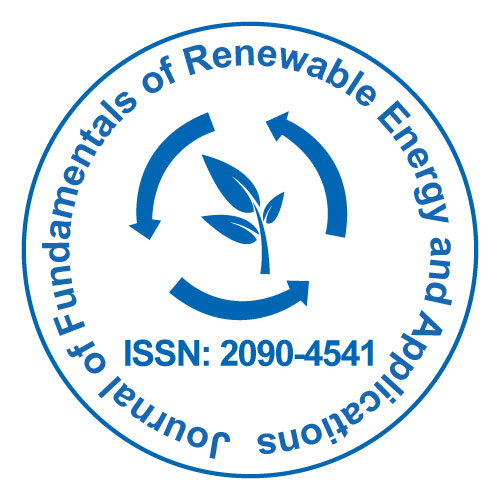
Journal of Fundamentals of Renewable Energy and Applications
Open Access
ISSN: 2090-4541

ISSN: 2090-4541
Dolly Wattal Dhar, Randhir Bharti and Radha Prasanna
ICAR-Indian Agricultural Research Institute, India
Scientific Tracks Abstracts: J Fundam Renewable Energy Appl
Microalgae are reported as a potential source of lipids and biodiesel, however, refinement and metabolic engineering are needed to enhance productivity and minimize the costs. Our investigation involved the production and quality evaluation of biodiesel from native microalgal isolates namely Chlorella sorokiniana MIC-G5, after transesterification of lipids with methanol in presence of sodium methoxide; and in Botryococcus sp. MCC31, after conventional and in situ transesterification. Total lipids extracted from dry biomass of Chlorella sorokiniana was in the range of 410 to 450 mg.g-1 whereas in Botryococcus sp. it varied as 330 to 410 mgg-1 DW. In Chlorella, the total saturated and unsaturated FAMEs were 43% and 57% while in Botryococcus these were 46% and 54%. The major FAMEs present in the biodiesel were methyl palmitate (C16:0), methyl oleate (C18:1) and methyl linoleate (C18:2). The 1H and 13C NMR spectra matched with criteria prescribed for high-quality biodiesel from both the isolates. The biodiesel from Chlorella exhibited a density of 0.873g/cc, viscosity of 3.418mm2/s, CN of 57.85, HHV of 40.25, iodine value of 71.823g Iâ?? 100gâ??1, DU of 58% and a CFPP of â??5.22ºC whereas biodiesel from Botryococcus sp. showed a density of 0.853g/cc, viscosity of 3.512mm2/s, CN of 57.57, HHV of 38.88, iodine value of 75.56g I2 100 gâ??1, DU of 58% and a CFPP of 4.8ºC. The results were in accordance with the details as specified by American Society for Testing and Materials and EN standards. Our study reports the promise of in situ transesterification in Botryococcus sp. and illustrates that the two microalgal genera can be a valuable feedstock for high-quality biodiesel generation.
E-mail: dollywattaldhar@yahoo.com